BROOKLYN
245 Clinton Ave., Brooklyn, NY 11205
Main: 718.940.5300
Admissions: 718.940.5800
Fax: 718.940.5680
LONG ISLAND
155 W. Roe Blvd., Patchogue, NY 11772
Main: 631.687.5100
Admissions: 631.687.4500
Fax: 631.687.4539
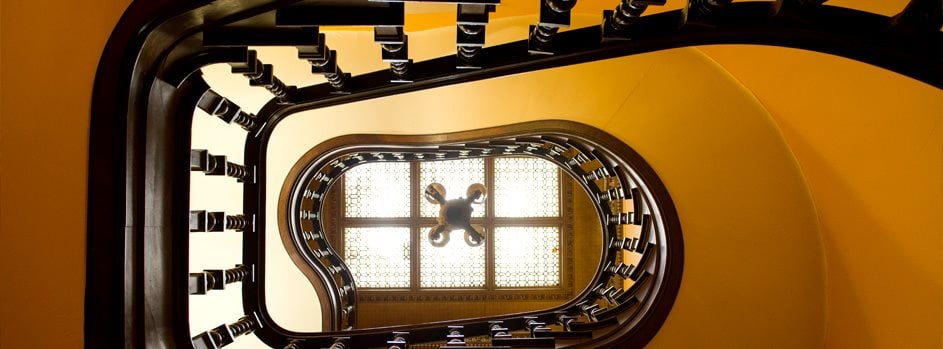
Transformation Through the Decades
Twelve pioneering students, one little gray building and a wealth of ambition. The humble beginnings and bold aspirations of St. Joseph's College for Women over a century ago became the foundation of a world-class institution that graduates more than 1,500 students annually at campuses in Brooklyn and Long Island, as well as online, and counts 43,000 alumni worldwide.
Founded by the Congregation of the Sisters of St. Joseph, the College has spent its first 10 decades honing and perfecting its craft, providing access to excellence and enabling women — and eventually men — to grasp and then reach their full potential. History reflects St. Joseph’s as an institution built on tradition, motivated by innovation and strengthened by a desire to adapt to changing times.
Below is a timeline that highlights significant moments in St. Joseph's rich history.
St. Joseph’s College for Women, in the Clinton Hill section of Brooklyn, opens its doors to a dozen students. The long-awaited institution — founded by the progressive Sisters of St. Joseph — initially calls St. Angela Hall home.
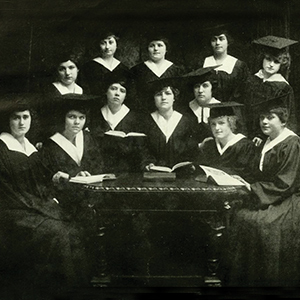
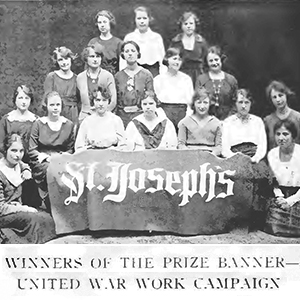
Supporting Veterans During the First World War
Our College community began demonstrating its ever-present commitment to U.S. veterans by supporting World War I efforts through a variety of activities, including joining the Red Cross, selling cakes and candies to raise funds for the soldiers, and sewing outfits for babies whose fathers were away fighting in the war.
Archbishop Thomas E. Molloy becomes the College’s second president, following the death of Bishop Charles E. McDonnell, the College’s first president.
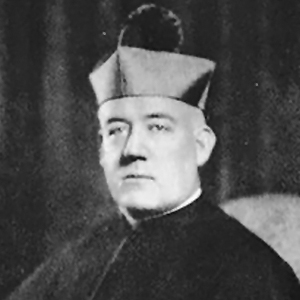
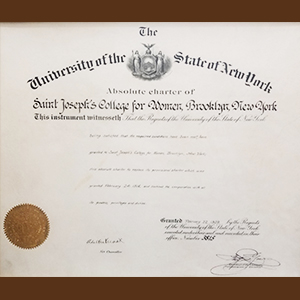
St. Joseph's obtains a permanent charter from the University of the State of New York.
Soon after expanding its curriculum to include child development classes, St. Joseph’s opens one of the East Coast’s first laboratory preschools. The program’s success established St. Joseph’s as one of the most innovative institutions for teacher preparation in New York City. It later is renamed the Dillon Child Study Center in 1968.
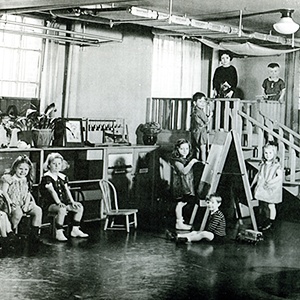
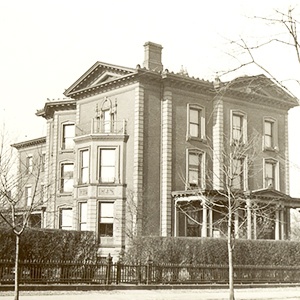
The Clement Family building adjoining campus in Clinton Hill is purchased and turned into an outdoor theater. It’s the third structure acquired by the College in five years. Earlier, the College purchased the Allison House at 265 Clinton Ave. and the Pratt House at 232 Clinton Ave.
The College introduces a Child Study major, which would later become one of St. Joseph’s hallmark programs. The program consistently ranks among the best teaching programs in the New York Metropolitan area.
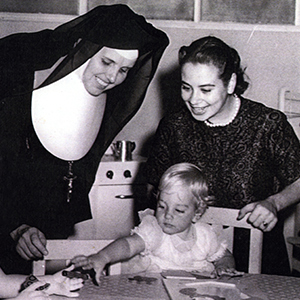
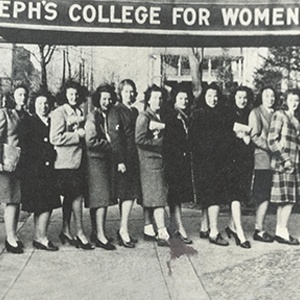
Enrollment reaches 469 and the number of alumni climbs to nearly 1,200 as St. Joseph’s celebrates its 25th anniversary.
World War II
Members of the College sewed clothes for people in war-torn countries, sold war bonds and stamps, and collected goods to help provide supplies to those in need. Students also entertained war production workers at the Brooklyn Navy Yard.
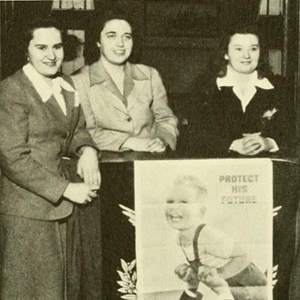
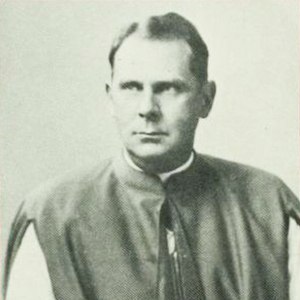
The Rev. William T. Dillon becomes the third president of St. Joseph's College.
Sister Vincent Thérèse Tuohy becomes St. Joseph’s first female president.
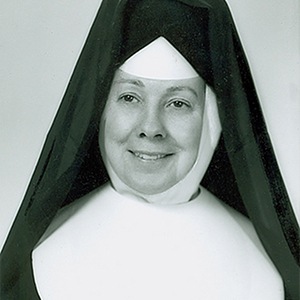
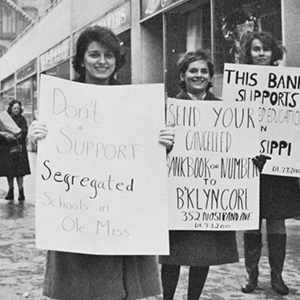
Sisters Participate in the Civil Rights Movement
Members of the Congregation of the Sisters of St. Joseph worked in and around Selma, Alabama, in the early 1960s, actively taking part in the Civil rights movement. They endured objects being thrown at them and witnessed brutal, vicious acts of racism, all while offering support to Black people in the area.
The College’s McEntegart Hall Library opens on Clinton Ave.
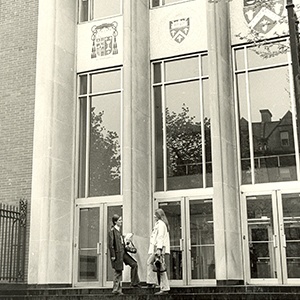
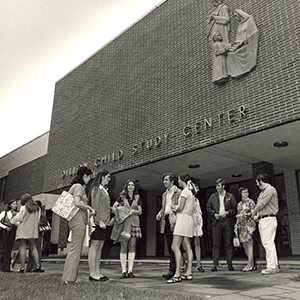
The campus’ preschool moves into a newly constructed building and is renamed the Dillon Child Study Center.
S. George Aquin O’Connor becomes the College’s fifth president.
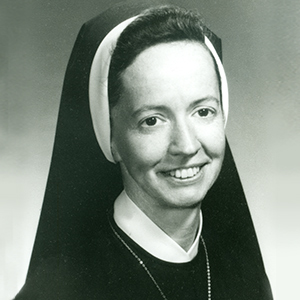
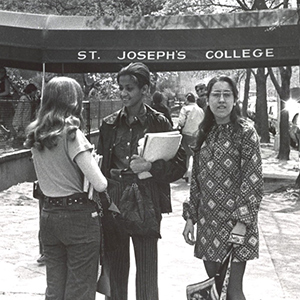
The College changes its name from St. Joseph’s College for Women to simply St. Joseph’s College, admitting its first male students and making the transformation to coeducational institution.
The College establishes the School of Adult and Professional Education.
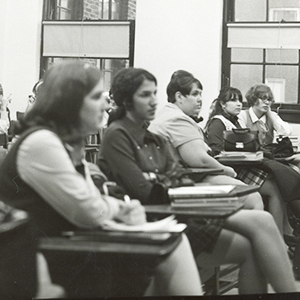
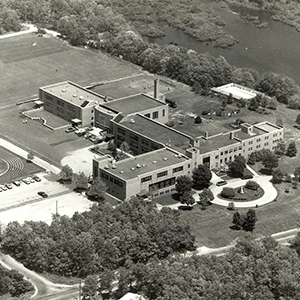
St. Joseph’s Long Island campus opens in Patchogue, absorbing what had been an extension program in Brentwood since 1971. Full-time enrollment surges past 2,000 students across the two campuses.
The Clare Rose Playhouse opens on the Long Island campus. It’s the campus’ first significant modification.
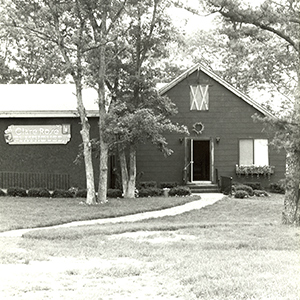
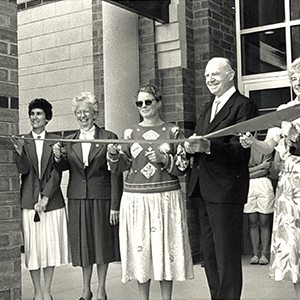
The Callahan Library opens on the Long Island campus.
St. Joseph’s establishes Weekend College at the Long Island campus. The College offers undergraduate courses to working adults in flexible time frames, allowing these students to balance their many work and family commitments.
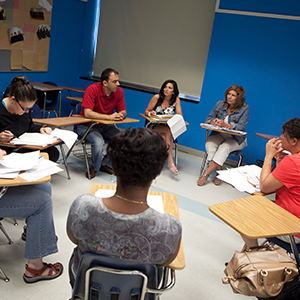
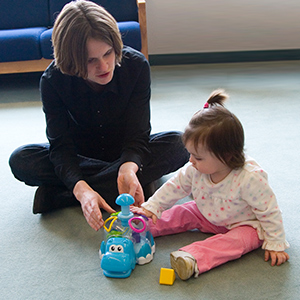
St. Joseph's introduces its first graduate degree, an M.A. in Infant/Toddler Therapeutic Education.
S. Elizabeth A. Hill, C.S.J., J.D., becomes the College’s sixth president and establishes the Council for the Arts to provide fine and performing arts programming to St. Joseph's and its surrounding communities.
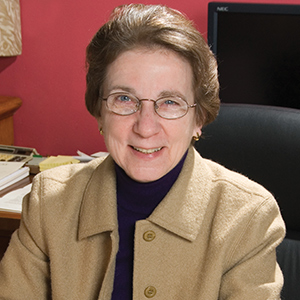
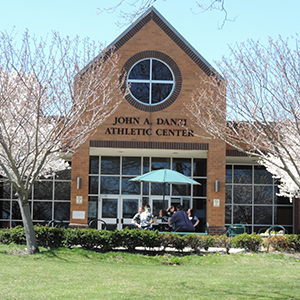
The John A. Danzi Athletic Center opens at the College’s Long Island campus. The facility continues to serve as the home venue for the campus’ NCAA Division III indoor sports teams.
St. Joseph's purchases a five-story brownstone at 256 Clinton Ave. in Brooklyn to be used as staff and faculty office space.
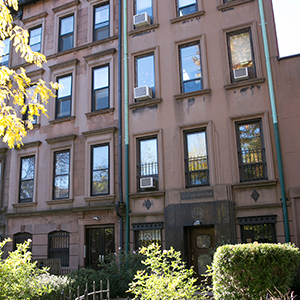
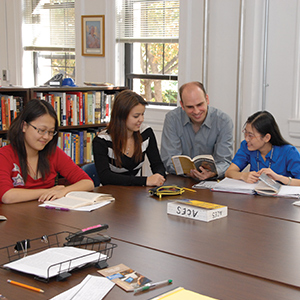
The Academic Center for Enhancement Services (ACES) at the Marygrace Calhoun Dunn Center opens to provide assistance to English Language Learner (ELL) students.
The College purchases its original home in Brooklyn, St. Angela Hall Academy.
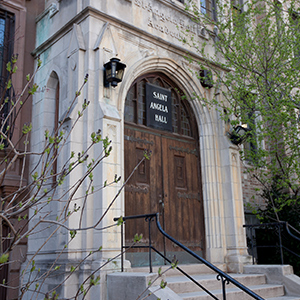
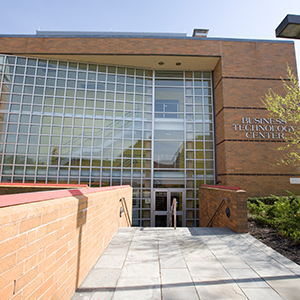
Long Island campus opens the 33,000-square-foot Business Technology Center in the heart of campus.
St. Joseph’s adds its first MBA program to its growing roster of graduate-level offerings. The College now offers more than 20 graduate degrees.


The College holds its inaugural Golden Eagle Athletic Hall of Fame Ceremony and honors the first class of inductees.
St. Joseph’s College unveils its new athletic complex: a 24.8 acre, state-of-the-art outdoor sports facility that is home to our baseball, softball, soccer, tennis and women's lacrosse teams.
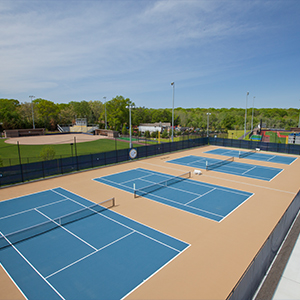

A Hospitality and Tourism Management program (HTM) is launched at the College, and becomes the only four-year HTM degree program offered on Long Island. The Institute for Hospitality and Tourism Management (IHTM) at St. Joseph’s College is also established — to provide a leading voice in the discussion of responsible tourism and hospitality.
The Brooklyn Campus launched The Writer's Foundry, the first boutique M.F.A. program in the College's history and in Brooklyn. Inspired by one of our most distinguished alumni, esteemed poet Marie Birmingham Ponsot '40, the program prepares an exclusive cohort of up-and-coming writers to succeed in all areas of literary life.
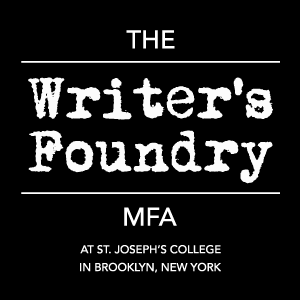
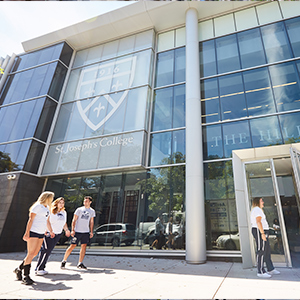
The Brooklyn campus opens The Hill Center, a state-of-the-art, 40,000-square-foot athletic and multipurpose facility on Vanderbilt Avenue. It quickly becomes LEED Gold-certified, a designation that declares the facility is designed, constructed, maintained and operated for improved environmental and human health performance.
Jack P. Calareso, Ph.D., becomes St. Joseph's College's seventh president and the first lay leader of the College.
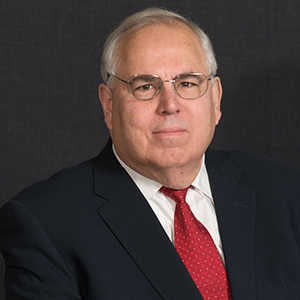

St. Joseph's College adds a Bachelor of Science in Nursing to its undergraduate programs on both campuses. The program prepares students for careers as registered professional nurses.
The College launches its fully online learning community, launches, immediately offering 15 online degree programs. Soon after its launch, enrollment skyrockets, growing by nearly 500%.

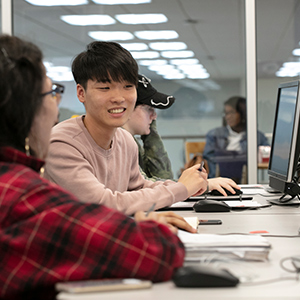
The Long Island campus launches a Bachelor of Arts in Studio Art and the Brooklyn campus announced a Master of Science in Forensic Computing. The Long Island campus introduces a master’s in forensic computing program the following year.
Donald R. Boomgaarden, Ph.D., becomes the College’s eighth president.
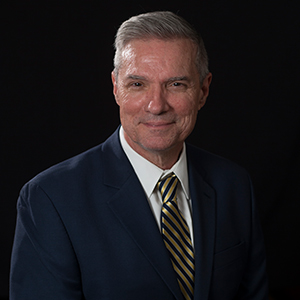
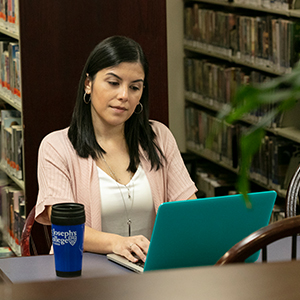
Our fully online program becomes a member of the National Council for State Authorization Reciprocity Agreements (NC-SARA) and begins offering more than 20 fully online certificate, undergraduate and graduate degree programs to students in all 50 states.
President Boomgaarden announces a three-year strategic plan, “Living Our Mission,” designed to help grow the future success of the College and its students.
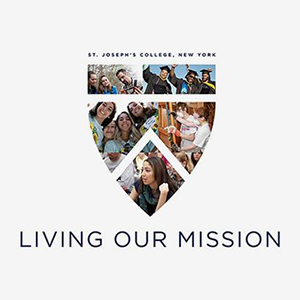
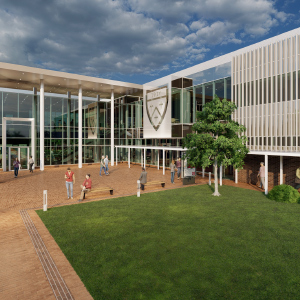
The College announces the imminent construction of a state-of-the-art 32,000-square-foot multi-million dollar Long Island Student Center, to serve the institution’s growing student population. Construction begins in June 2021.
As much as ever before, the St. Joseph’s College community demonstrates the institution’s motto, Esse non videri, “To be, not to seem,” in continuing to fulfill its mission throughout the COVID-19 pandemic. The College pivots to virtual learning via Zoom, Google Meet and other video conferencing options, then later offers a broad number of hybrid learning options, including in-person, virtual and traditional online classes.
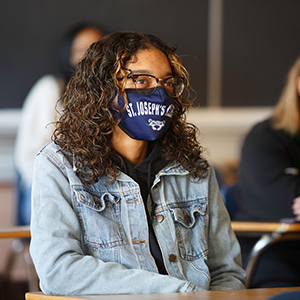
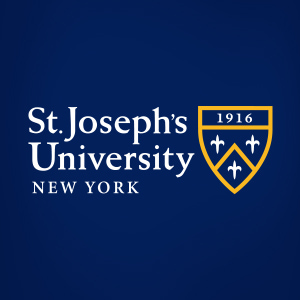
Effective April 12, 2022, the New York State Regents, along with the New York State Department of Education, has officially granted St. Joseph’s university status.
The Long Island campus unveils its Student Center, a $17 million state-of-the-art, 33,200-square-foot ultra modern building to serve as the epicenter of student life on campus, with a ceremonial ribbon cutting in October 2023.
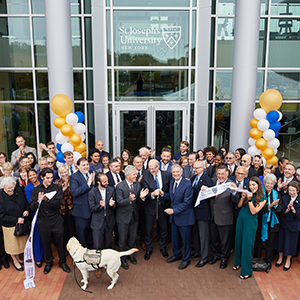
Get Social
Get Social